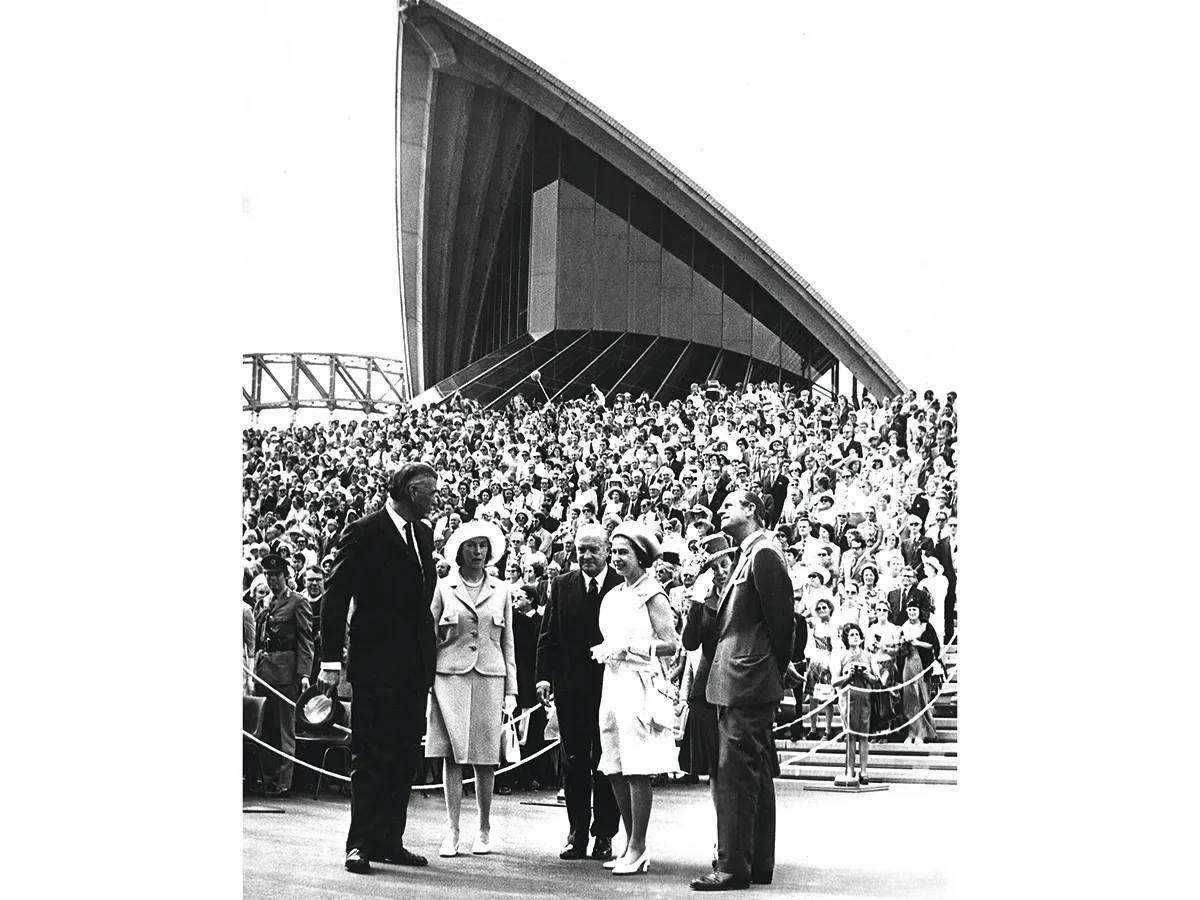When was the Sydney Opera House officially opened
October is springtime in Sydney, Australia, and the weather can be unreliable. But by mid-afternoon on 20 October 1973, a bank of ominous grey clouds had given way to bright blue skies and wafts of cotton-ball cumulus. A strong breeze was blowing, however, as Queen Elizabeth II stepped from a ceremonial Rolls Royce with the Duke of Edinburgh, and ascended a dais to declare Sydney’s architecturally stunning new opera house open.

Wearing a silken dress of duck-egg blue and matching hat – ‘not unlike an inverted sail of the opera house’, one observer commented – the monarch gripped the pages of her script tightly as wind buffeted the platform. The speech itself was not without irony: ‘I understand that its construction has not been totally without problems,’ the Queen said, referring to the majestic edifice before her.
Who designed the Sydney Opera House?
Australians, famed for wit as dry as their national outback country, no doubt appreciated this royal piece of understatement. The Sydney Opera House project, nearly two decades in the making, had in fact been dogged with controversy from the outset. A competition to design the new building was launched in 1956, and the choice of Danish architect Jørn Utzon as winner was divisive: some loved his futuristic, white-sails-in-the-sunshine conception; others derided its system of interlocking vaulted shells as drastically impractical.
How many shells are there on Sydney Opera House?
In total there are 14 shells on the Sydney Opera House.12
How long did it take to construct the Sydney Opera House?
The naysayers had a point. Construction began in 1959, but was dogged by delays and cost overruns, many caused by the complexity of Utzon’s design. Originally scheduled to end in 1963, the build was eventually completed ten years later. The overspend, too, was eye-popping – 102 million Australian dollars was the final bill, compared to an initial 7 million estimate. Utzon, weary of the endless wrangling, resigned from the project in 1966 and declined an invitation to the opening ceremony.
But on that October day in 1973, all those tribulations were forgotten. Sixty thousand balloons soared skyward over Sydney harbour, pigeons and white doves were released, and a million people thronged the city’s public places. Marching bands filed through the streets, and atop the opera house an Aboriginal actor narrated a reminder that the shoreline site was once inhabited by indigenous Australians.
What was the first performance at the Sydney Opera House?
The building itself had already hosted its first performances. Prokofiev’s War and Peace was staged on 28 September in the 1,500-seat Opera Theatre (since renamed the Joan Sutherland Theatre, after the famed Australian soprano). A day later, in the adjoining Concert Hall, Charles Mackerras conducted an all-Wagner programme with the great Swedish soprano Birgit Nilsson. The Queen herself attended performances of Beethoven’s Ninth Symphony and Mozart’s The Magic Flute, and was greeted by children in koala, kangaroo and monkey costumes.
Does Sydney Opera House have acoustics problems?
In the near half-century since Sydney Opera House’s opening, much has been written about its design flaws. The Concert Hall’s acoustics – they ‘would do an aeroplane hangar a disservice’, the actor John Malkovich reckoned – were particularly problematic, and the hall is currently closed for improvements. The Joan Sutherland Theatre has also drawn opprobrium – ‘inadequate for opera,’ in Scottish director David McVicar’s judgement, with a cramped orchestra pit and limited backstage areas. Some of these shortcomings were addressed in a 2017 renovation.
What is Sydney Opera House famous for?
Yet Sydney Opera House remains hugely popular with the public, nearly 11 million of whom visit it annually. And architecturally it is now a recognised classic. ‘One of the indisputable masterpieces of human creativity,’ was UNESCO’s verdict in declaring the building a World Heritage Site in 2007. ‘Not only in the 20th century but in the history of humankind.’
Top image credit: Getty Images